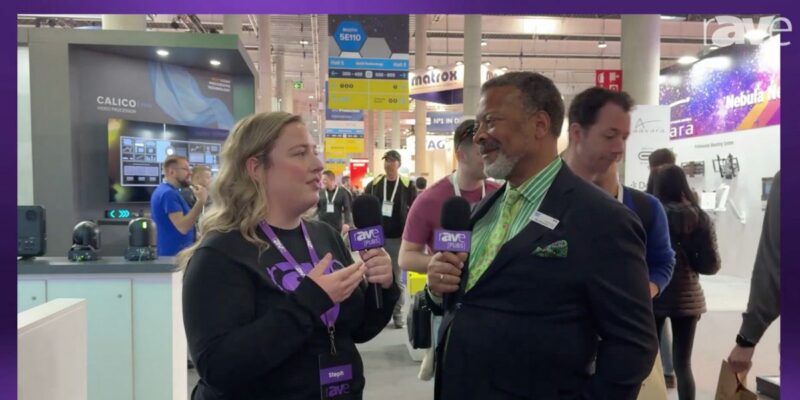Keep on Truckin’! HDMI, HDBaseT, and BJ and the Bear
I had the pleasure of supporting a distributor of ours, Almo ProAV at their E4 Expo in Irvine last week. That event was kicked off by a keynote from rAVe’s very own Gary Kayye. During the Q&A section of the keynote, someone asked is Gary saw HDBaseT as a replacement for HDMI in the future, to which Gary rightly answered “No”.
HDMI is more than a wire and connector. That is only the transport method of HDMI. The other part of HDMI defines clock speed, bandwidth, security, etc that make up the HDMI signal itself. HDBaseT is only an alternate transport method. So why is it necessary?
 It seems that their is some confusion among integrators about HDMI vs HDBaseT and their roles in our industry. I could point you to many publications on the subject, but I thought that using a very simple analogy may help even more. I remember as a kid watching BJ and the Bear, about a trucker and his chimp. Considering I’ve always seen the HDMI connector and cable as a monkey we have been forced to carry on our back to date, I offer this example of a factory, a shipping company, and the end customer to HDMI and HDBaseT.
It seems that their is some confusion among integrators about HDMI vs HDBaseT and their roles in our industry. I could point you to many publications on the subject, but I thought that using a very simple analogy may help even more. I remember as a kid watching BJ and the Bear, about a trucker and his chimp. Considering I’ve always seen the HDMI connector and cable as a monkey we have been forced to carry on our back to date, I offer this example of a factory, a shipping company, and the end customer to HDMI and HDBaseT.
Let’s say you own a factory that makes a product. That product is heavily regulated and too big to ship in one piece on a single truck. In fact, the product has to be broken down into 19 different components to be shipped out on 19 different trucks with locked trailers. These trucks then need to leave at the same time and arrive simultaneously at their destination to be assembled into the final product at the end customers location.
Sound tricky? It should. You have to create a 19 lane highway to send all these trucks side by side to leave and arrive in sync. Now throw in the variable of distance. If the trip is short, it is much easier to coordinate on time arrival and the integrity of the cargo. As you go from a small puddle jump to a transcontinental haul with inconsistent lane widths, peaks, valleys, and turns however, the chances of one of those trucks having a problem, or trucks going across their dividing lines resulting in delayed or damaged cargo increases exponentially.
But what if you were allowed to send these 19 trucks a very short distance to a transfer station, where the cargo is not unpacked, (that is against the regulations) but instead where multiple, locked trailers of cargo are just loaded onto fewer trucks? You take your 19 payloads, and consolidate them into 8 instead.
Those 8 trucks traverse the long distance, decreasing your potential issues by more than half, and then at the end of the journey, another transfer station breaks the cargo back into 19 parts for a short delivery to the client destination where the cargo is unlocked and unpacked for final assembly to take place.
You now have mitigated the issues of 19 shipments arriving simultaneously, but the value of this method while clear, is highly dependent on one thing. . .the quality of the transfer stations themselves. If the stations are inefficient then the cargo is not transferred quickly enough, or the payloads get mixed up, etc, jeopardizing the whole scheme. You really need a standard for how these transfer stations operate and some tight restrictions on how well that standard is followed.
So if you haven’t figure it all out yet, HDMI is the factory itself. It is broken down into its 19 components. When an HDMI connector is used, this data all travels on that 19 lane highway, with all its problems increasing with each additional inch of travel you ask the signal to do. An inconsistent HDMI standard is the route cause for the varying performance of cables across lengths and manufacturers.
The transfer stations are your HDMI extenders, taking that 19 wire connection and staging it down to 8 wires (1 CatX based cable). Before HDBaseT there was varying success even with these extenders, as every extender manufacturer was using their own standards for creating the “transfer station”. One may work, others may not, and they all worked at varying distances. The transfer station for HDMI cargo was a good idea, as it minimizes variables over distance, but without a standard, it was lackluster as well. Short external HDMI cables were still needed, increasing chances of signal failures.
Enter HDBaseT. HDBaseT created a standard for these “transfer stations” across manufacturers, and with Valens controlling the manufacture of the core chip, you can assume more quality control and consistency even across manufacturers. The debut versions also needed short HDMI cables, which increase potential issues (see my InfoComm article here), but with the introduction of displays and sources with integrated HDBaseT ports those short cables go away.
Source and Sink components with integrated HDBaseT ports, allow manufacturers to minimize the problems of a 19 wire system, making those distances as short as possible, before transferring them to HDBaseT and its 8 wire transmission. Since the cargo is never unpacked by HDBaseT, there are not key issues with the transfer, and keys only are transferred as well from source to sink.
It is a long overdue solution, although it is yet to be seen if HDBaseT can exercise better control over its licensing and standards than HDMI has to date in their cables and connectors.
So in a nutshell, HDMI stays as a protocol even if we, (as I hope) get rid of the HDMI connector and cable itself. This seems like a win, given the fact that the cable and connector seem to be the weakest link in HDMI on the whole anyway. If manufacturers integrate HDBaseT ports on their gear, converting HDMI signal protocol to an RJ45 connector inside, we may just find we are not saddled with dealing with that “data solution to a video problem port” ever again. Finally BJ may lose the Bear for good and get that poorly designed monkey off of our industry’s back!




